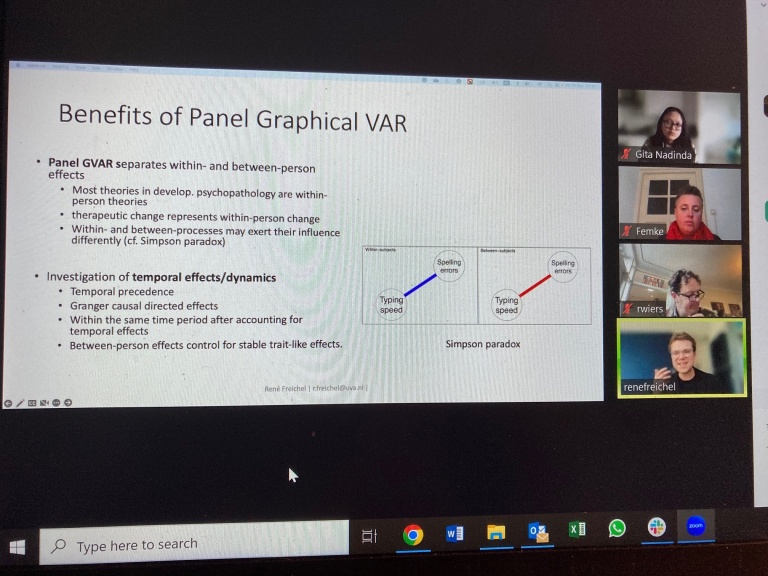Causality was the main theme of the last ‘network meeting’, on Friday 16 December, where about thirty NSMD affiliated researchers exchanged ideas and discussed complicated research questions. Originating from six Dutch universities, the fact that it was an online meeting saved a lot of travel time and CO2 emission. It was the fifth online meeting in this format, this time organised by the colleagues from University of Amsterdam.

Causality can be described as the relationship between two (or more) variables, where one is the cause and the other the effect. For example: the snow in Limburg during this online meeting, caused more car accidents than on a regular Friday morning. Or: treatment of an anxiety disorder can lead to fewer symptoms for the patient.
In the NSMD project, one of the central questions to answer is: can we draw a network of a person’s symptoms, based on data collected by the patient, and can we point out whether symptoms are causally related? Especially within cross-sectional data sets this seems to be a challenge, if at all possible. With what algorithm can you determine causal relations? Does randomisation guarantee excluding all cofounds? As always, there were many topics to discuss.
Lourens Waldorp (UvA) gave an inspiring overview of possibilities and limitations. Peter de Jong from Groningen University did his best to do his PhD student Franziska Schutzeichel justice, who prepared a presentation about her findings so far, but fell ill unfortunately. The comorbidity of symptoms of depression, anxiety and eating disorders, plus the potential value of meaning in life was presented, including potential causalities between the variables. PhD student René Freichel, from UvA, gave very informative talk on ‘causal interference in panel data’ and the application of panel network models, including the ‘cross legged panel network models’. Puzzled, enthusiastic, and most of all inspired, the NSMD group left zoom after 2,5 hours. There’s (net)work to do.